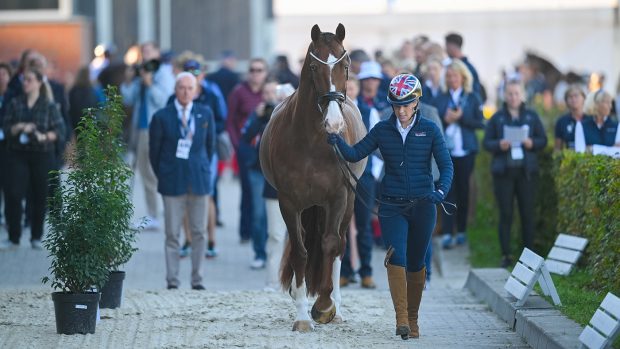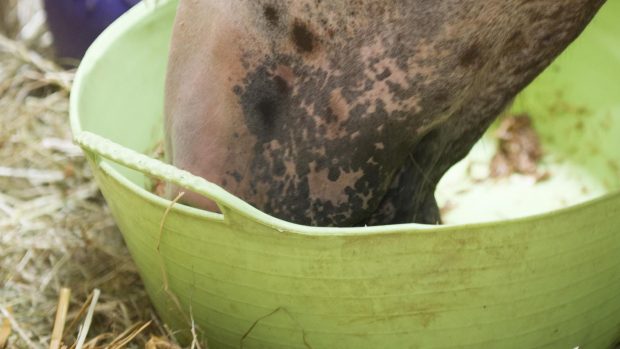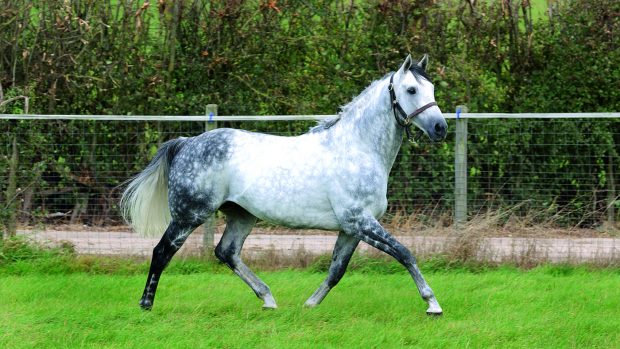The final horse inspection at Badminton — or any other three-day event — is so vital that it is often called the fourth phase. So what is the purpose of this process? What do the judges look for? And how do competitors prepare?
“We have the inspection because the FEI code says the welfare of the horse is paramount,” explains Paul Farrington MRCVS, the associate veterinary delegate at Badminton. “This is not a test of complete soundness. It’s a test of fitness to continue in the competition. On Sunday [compared with the first trot-up before the competition starts], we expect a little stiffness and soreness.”
The decision to pass each horse is taken by the three ground jury members, advised by a vet. A horse is rarely failed immediately — if the ground jury is unsure they normally send it to the holding box. There, another vet will talk to the rider and connections, can palpate the horse all over, use hoof testers and see the horse trot up on grass or another soft surface. The rider can withdraw from the holding box, or re-present to the ground jury, who will confer with the vet.
“We have to differentiate between post cross-country stiffness and a more severe injury,” says Paul. “Does the horse have an injury that by show jumping will make it worse? Is the horse so lame that it would bring the sport into disrepute if it continued?
“I might see a horse trot on grass in the holding box and say it’s only got a bruised foot and can show jump without any harm. But if in front of the ground jury it’s still very lame, in the interests of public perception they are bound to eliminate it.”
Saturday after cross-country
As a rider, presenting the horse well is one aspect of passing the trot-up; the other is the right post-cross-country care.
“You need to identify accurately areas of low-grade lameness. So if your horse’s feet are a weakness, get him well shod and then stand him in ice after the cross-country. If it’s his back, arrange for your massage therapist to be there. Have an organised plan,” says British senior team vet Jenny Hall MRCVS.
Most experienced three-day riders, grooms and vets routinely ice the horse’s legs.
“You’re trying to increase the blood flow and decrease the inflammatory response,” says Jenny, for whom whirlpool boots — where the horse stands in moving iced water — are the “gold option”.
Jackie Potts, William Fox-Pitt’s head girl, has her own system, using ice bags from the supermarket over wet all-purpose cleaning cloths and then boots on top.
“We take six icepacks to the finish, put two on the front legs while the horse is cooling off and one on each leg to walk back to the stable,” she says. “I’d carry on icing for 2hr, with ice on for 20min then off for 10min alternately.”
Jenny Hall is happy for riders to put their horse’s cold clay [Like Ice or similar product] and stable bandages on after a couple of hours of icing, and then to trot the horse up at around 5.30pm in its bandages. If there are no problems, she recommends a walk and a hand-graze, with another trot-up at 10pm.
Jackie Potts prefers to keep the cold clay off until after a 10pm trot-up and icing session, while Lucinda and Clayton Fredericks don’t use it at all, preferring dry bandages overnight.
Horses may also need attention to an injury. If it’s serious, it’s vital to get veterinary help, withdrawing if necessary.
Polly Taylor MRCVS, a vet and owner of Phoebe Buckley’s advanced ride Little Tiger, says: “You can work hard on things like cuts and bruises, but don’t try to cover up tendon injuries.”
Ice is very effective used intensively on bruises and cuts. If the problem is in the feet, you will need to get hoof testers on it and maybe remove the shoe. As well as standing the horse in buckets of iced water, feet can be packed with cold clay overnight.
Alternating hot and cold treatment works for some problems. Lucinda Fredericks used this method successfully on Headley Britannia when she had a haematoma on her shoulder at Luhmühlen last year. “Brit” also had acupuncture.
“Arnica can help, too,” says Lucinda. “And two other things that have really benefited our horses are using a chiropractor and Mirotec rugs [which use ‘space blanket’ technology for heat reflection].”
William Fox-Pitt’s horses often enjoy the attentions of physiotherapist Amanda Sutton, as well as magnetic rugs and the Equissage machine, while Jackie also recommends lasers for sore areas. She’s delighted if there’s a spa at the event, and will routinely give each horse one spa treatment — standing in cold water up to the knees and hocks — on Saturday evening and one on Sunday morning. “It gets the filling down really well, ” she says.
Sunday morning before the trot-up
On Sunday morning, it’s all about organisation and planning your time well. “Don’t leave things to the last minute,” says Lucinda. “What you saw on Saturday night may not be what you see on Sunday morning.”
Jackie Potts says grooms must always be one step ahead of their rider.
“By the time William arrives, I will have the cold clay off, the horses trotted up, iced once and plaited, as well as being fed, with water and hay,” she says.
Once the cold clay is off and the horse has been trotted up, you can make a plan.
“If the horse looks fine, I’d never recommend riding it in case something goes wrong,” says Jenny Hall. “But if it’s not happy, maybe ride it for 10-15min at 7am and if it looks better, again before the trot-up.
“Schedule things so you’re not walking round for hours — if the horse is tired, there are only so many minutes he can look his best. That needs to be when he’s in front of the ground jury.”
Riders and grooms all develop their own systems. For Polly Taylor, the most important thing is that the horse has a good rest and the chance to walk about. She doesn’t believe in icing the legs as a matter of course, and she and Phoebe Buckley often leave Little Tiger without bandages overnight.
“If there’s a serious problem, it’s better to find out. If not, stiffness will go with a good walk — on a long-rein for up to 1hr — in the morning.”
Jackie Potts emphasises that she’s not just trying to get the horse through one more day: “We’re preserving them for the future — that’s why William’s horses go on so long.”
And once you’ve passed the trot-up, that’s not the end of your responsibility to your horse’s welfare.
“Twice I’ve trotted horses up successfully and then withdrawn them before the show jumping,” says Lucinda Fredericks. “I managed to get them sound but I knew the horse wasn’t happy.”
This veterinary feature was first published in Horse & Hound (29 March, ’07)




